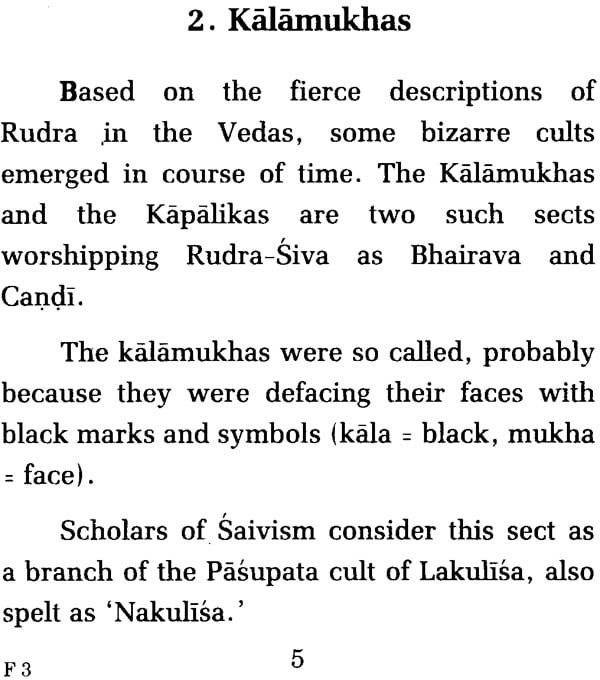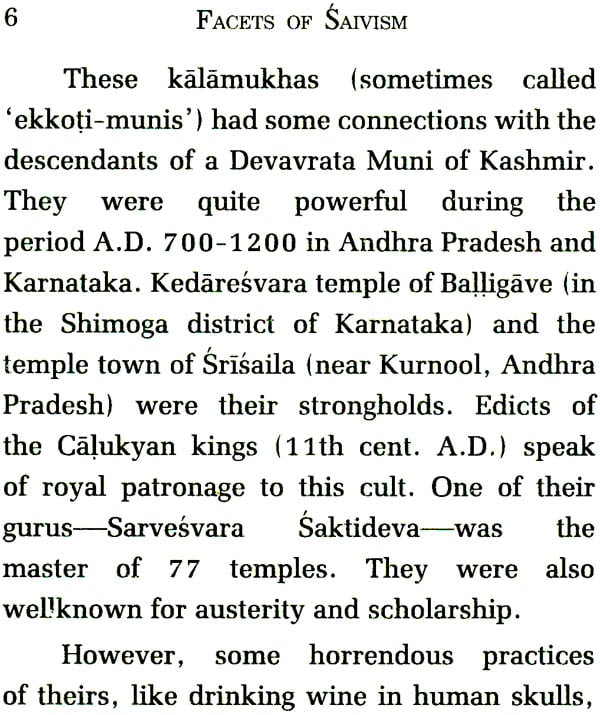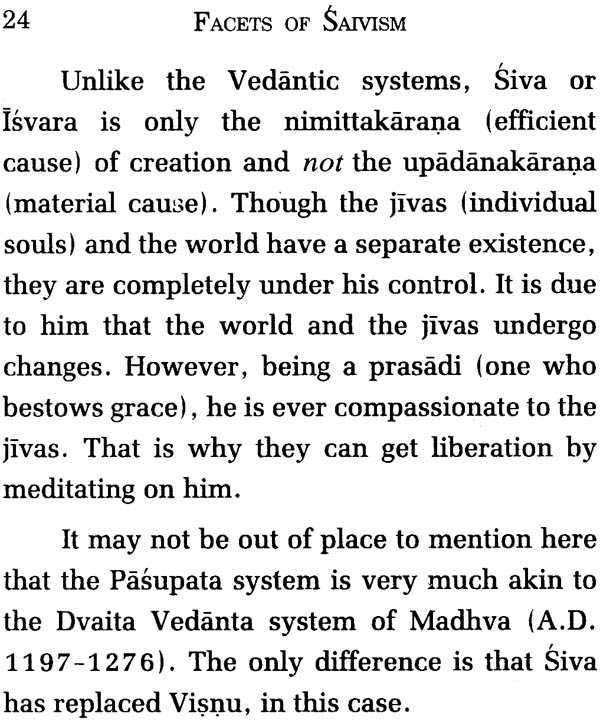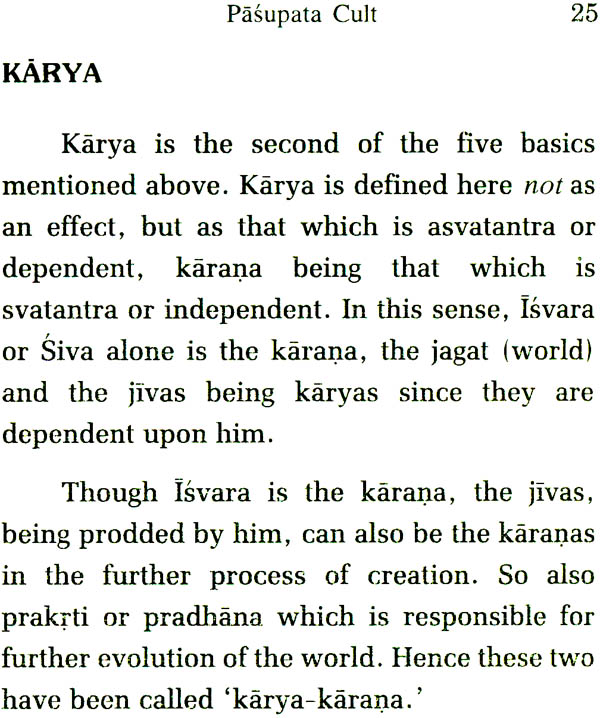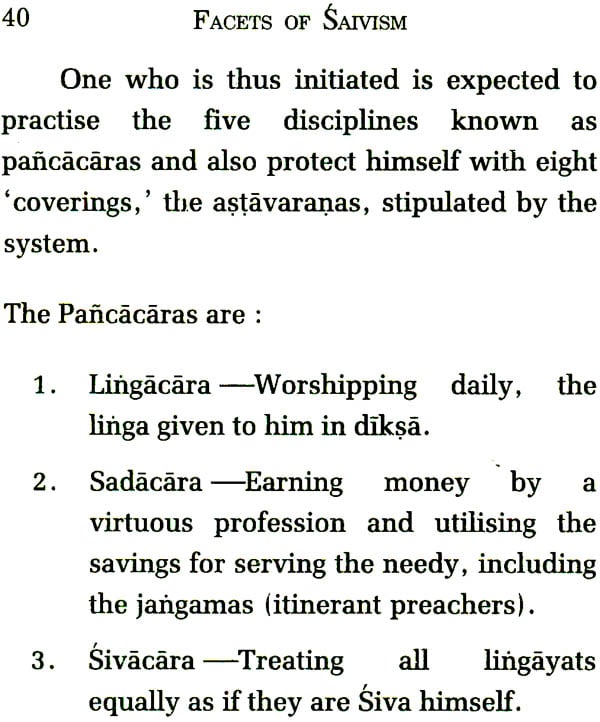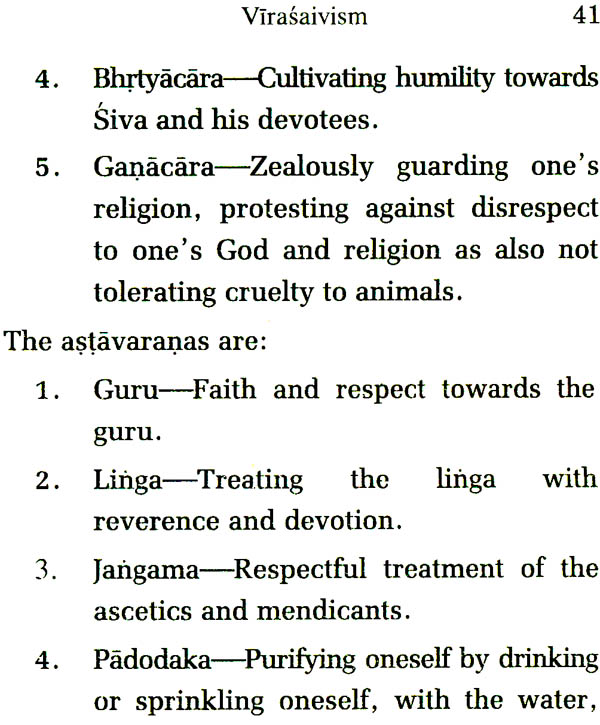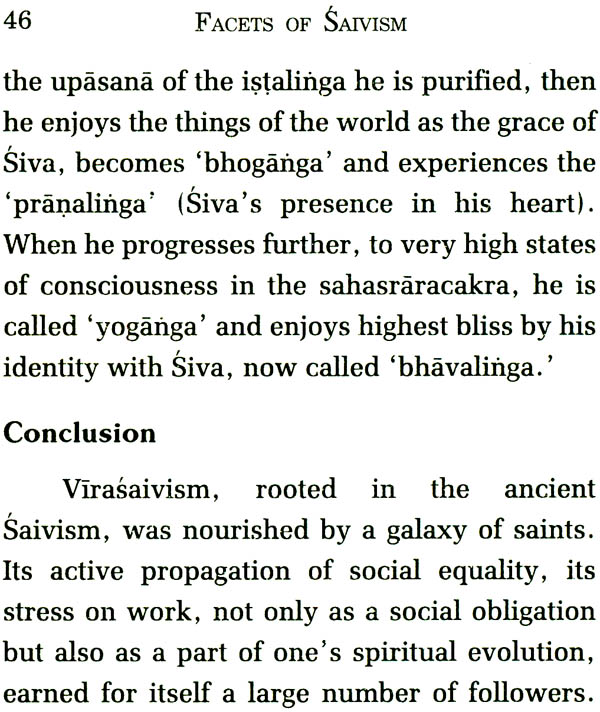
Facets Of Saivism
Book Specification
| Item Code: | NAB031 |
| Author: | Swami Harshananda |
| Publisher: | Ramakrishna mission |
| Language: | English |
| Edition: | 1999 |
| Pages: | 56 |
| Cover: | Paperback |
| Other Details | 5.3" x 4.3" |
| Weight | 30 gm |
Book Description
From the Preface
Siva, Devi (Sakti) and Visnu are the three major aspects of God presented in the Hindu pantheon during the post-Vedic period.
In this booklet an attempt has been made to introduce to the reader the various facets of Saivism in as simple a manner as the subject permits.
It is aimed at giving the Saivites a basic knowledge of their cult. The non-Saivites also, can peruse through the booklet to get at least a 'nodding acquaintance' of the same.
We hope that this brochure too will be well received by the students of Hinduism, as the other booklets published from here.
Saivism is the religion and philosophy of those who believe that god Siva is the supreme Being .
Whether Rudra, the Terrible of the Vedas and Siva, the Auspicious One, of the ‘non- Vedic' ('non-Aryan') 'Dravidian' cults battled for centuries and then blended to emerge as one deity of compromise-Siva-Mahadev, the Auspicious Great God-is a moot point.As the Indus Valley civilisation, which had once been believed to be pre-Aryan, non- Vedic or Dravidian, came to be accepted as a continuation of the Vedic civilisation it self, in fact its later phase, scholars had to concede that Siva as depicted on some of the seals with a trident and a bull, was very much a Vedic deity even as the Mother Goddess was.
Being the god of destruction and dissolution of the world, as delineated in later literature, Siva had to be Rudra, the terrible. Hence supplications to him to be propitious to one's children (vide Rgveda 7 .46 . 21 ,) descendants, cattle and property (ibid., 1.114. 81) are quite in order. However, he also has a benign form (Sambhu, the beneficent one), is the heavenly physician who cures one's diseases and protects one's cattle.
By the time of the Atharva-veda and the Svetasvatara Upanisad (1. 10; 3.2; 4.12,21, 22 ; 3 . 14; 4. 10), the concept had further evolved to indicate him as the supreme or the highest God.
Along with the development of the concept of Rudra-Siva, there had also been an evolution of the concept and symbology of the linga as the chief emblem of Siva. The linga resembles a pillar with a semispherical top. Being a rounded surface in all dirctions, it is, perhaps, the closest approximation to a god considered as beyond all names, forms and attributes. Whereas some scholars find in it the remnants of phallic worship of aboriginal tribes, others feel it is a metamorphosed form of the Vedic yupastambha (sacrificial post) as the yagasala (sacrificial shed) gradually evolved into the now common Hindu temple. Even if a phallic origin is admitted, a third section of savants argue, that there is nothing wrong in it since it represents the generative principle of God, the creator.
Though Saivism might have started as a simple faith and a mode of worshipping Lord Siva as the Supreme Being, over the centuries, it branched off into several varieties of sects and cults. Six of these have left their imprint on the religious history of India though two or three only are surviving and thriving. These may now be considered by arranging them in the English alphabetical order.
| 1. | Introduction | 1 |
| 2. | Kalamukhas | 5 |
| 3. | Kapalikas | 8 |
| 4. | Kashmir Saivism | 10 |
| 5. | Pasupata Cult | 21 |
| 6. | Saivasiddhanta | 32 |
| 7. | Virasaivism | 36 |
| 8. | Epilogue | 48 |
